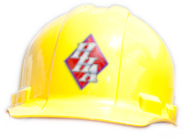source credit: Deposit Photos
While you may not yet be detecting it in the air outside, change is definitely on its way as we move from the arctic chill of winter to the warming weather that comes with spring.
This also means that soon it will be time to switch over from heating your home to cooling it instead!
All winter long, your heater has been working hard to keep you cozy inside your home. But now, it is ready for a good vacation, and your air conditioning system may need to be coaxed out of hibernation to take over.
In this post, learn the 6 tips to attend to so that when those first warm days arrive, your HVAC system will be ready and raring to go!
Take Your A/C for a Pre-Spring Spin
The best way to find out what is working (and what may not be working) is to take your hibernating air conditioning unit out for a little pre-spring spin. Wait until the warmer part of the day to do this (so as not to freeze yourself out of your own home!).
Switch your HVAC system from heat to cool, adjust your thermostat a few degrees down, and let it run one complete cycle. As your A/C cycles, pay attention and see if you notice any or all of the following:
Listen for any strange sounds such as knocking or banging
Note how long it takes to cycle on and off again, and if it stops at any point mid-cycle
Notice if there are any unusual odors
See if you feel like your indoor air is actually getting cooler
Walk from room to room, making sure all the vents are open and clear.
Walk outside and listen to your unit as it cools and also pay attention to odors and any debris or discharge on or around the unit itself.
Schedule Your Pre-Spring HVAC Maintenance & Cleaning
For safety as well as energy efficiency's sake, it is a wise plan to schedule a routine HVAC maintenance inspection and cleaning at least twice per year, once just before spring and again just before winter.
You will want to keep your notes from the A/C test run so you can tell your technician about anything in particular you are concerned about. During the cleaning and maintenance call, your technician can do all of the following:
Inspect your HVAC unit and repair or replace any worn-out parts, lubricate mechanisms, change air filters, and perform other service work as needed.
Clean in and around the unit itself (VERY important: simple dirt accumulation is the top reason HVAC units suddenly conk out in the middle of the hottest part of the year!)
Change the filters.
Check for the presence of any obvious loose seals, cracks, or leaks in or around your HVAC unit.
Seal Up Leaks and Cracks & Consider Adding Extra Insulation
Winter weather can be unpredictable and, at times, extreme. Sometimes things can work themselves loose. Harsh winds and flying debris can create cracks or loose seals in and around windows and doors and in attics and basements.
Pre-spring is a great time to seal up leaks and cracks to maximize indoor air retention before the hottest months of the year arrive. This way, your HVAC unit won't have to work so hard to keep your home cool.
At the same time, adding extra insulation can be one of the most cost-effective investments you make because it both increases the efficiency of your HVAC system and decreases your monthly utility costs.
Schedule an Air Duct Test & Cleaning
You may want to also ask your technician about conducting an air duct test to see if your air ducts need cleaning.
Duct cleaning will remove dust, dirt, debris, dander, pollen, toxins, and other allergens that congregate and build up along the sides of your air duct system. This build-up impacts your home in each of these ways:
Decreases your HVAC system's efficiency
Increases your monthly energy use and utility costs
Creates a fire hazard
Increases the likelihood you will suffer allergies during the spring season
Cleaning your ducts will lower your energy bills, improve the flow of cool air throughout your home, reduce allergy symptoms, keep you and your loved ones safe, and ensure your indoor air is as clean and healthy as possible.
Check Your Thermostat Function
If there is one simple thing you can do to keep your energy costs lower as temperatures heat up this spring, it is to ensure your thermostat is functioning properly. In particular, you want to check that the temperature it displays matches the actual temperature of your indoor air.
If there is a mismatch here, not only will you face paying more for cooling than you should be paying, but you may miss the warning signs of an imminent HVAC failure.
NOTE: If you do not have a thermostat that is programmable, you may also want to consider a pre-spring upgrade. You will be amazed how much an adjustment of just 1–2 degrees can save you on your utility bills!!
Install a Carbon Monoxide Detector
What a programmable thermostat will do for energy efficiency, a carbon monoxide detector will do for your family's safety. Having a working detector is critical to home safety precisely because you will not be able to detect a carbon monoxide leak on your own.
Carbon monoxide is colorless, odorless, and potentially lethal. With a carbon monoxide detector in place, you will be instantly alerted if carbon monoxide is detected.
Contact us at Harbin Heating & Air Conditioning to schedule your HVAC spring maintenance. We are also happy to help with duct cleaning, installation of carbon monoxide detectors and programmable thermostats, and other services to create a safe, cool home for you this spring!
source credit: https://bit.ly/36HKmme


